There is a cost to tinkering with formats and selling the game to Sky crickets very life is at stake

The barman at the Bat and Ball isnt sure whether or not he likes cricket. Never seen it, he says, never played it. Its a pity, because the game grew up by his pub. Its a hook over the road from Broadhalfpenny Down, where they played the very first game of first-class cricket in 1772. The landlord then was Richard Nyren, captain, secretary, and star turn of the famous Hambledon team who often played and beat All-England. They used to have 20,000 here for those matches. This particular Saturday Hambledons third XI are playing Portsmouths. There are five people watching. The players are all old men and young kids, starting their first or last seasons in senior cricket.
Hambledon had a job getting a side out. A lot of the younger boys were away playing for their private schools, the older ones were already back at university, and everyone else was in Southampton watching England play Pakistan. They werent the only club struggling. There were eight forfeits across the league that weekend. It used to be the local rule that a side who forfeited three game in a season would be demoted, but they had to scrap it. Too many teams would have suffered.
The Hampshire league was the largest in the world till lately. I could name 20 clubs that have folded sides in the last five years, says Hambledons chairman, Mark Le-Clercq. The actual number is 40. A lot stopped running third or second teams, some, such as Swan Green, just closed down everything. Its a national problem. The England and Wales Cricket Board says that across the country participation has fallen by 8% in three years. Thats true if youre only counting people who play once a year. If youre counting the regulars who played once a month, its down by 20%.
The Cricket World Cup starts at the end of the month, and later in the summer England host the Ashes too. The two biggest events in the sport are happening back-to-back, and England are favourites for both. Well hear a lot about Englands wins and losses, less about whats going on below, in the villages, towns, and counties. The ECBs chief executive, Tom Harrison, keeps saying it is a once-in-a-generation opportunity to revitalise the game across the country. But Le-Clercq isnt sure its going to have any effect on his club. The ticket prices are so expensive, and its only on Sky, so not many people are going to see it.
The last time Hambledon had a surge of interest was in 2005, when the Ashes were on Channel 4. That series had an average daily audience of 2.76m. In 2006, Sport England recorded that 195,200 adults were playing cricket every week. Then the game went behind a paywall. A decade later, the 2015 Ashes had an average daily audience of 360,444, and weekly participation had dropped to 158,500.
Harrison hopes Englands success this summer is going to build another great wave of enthusiasm that will carry the sport into 2020, when the ECB will launch the Hundred, a simpler, quicker, version of cricket, played by eight new teams in the middle of summer. Its been designed, at enormous cost, to try to win back the wider audience the ECB has lost. For the first time in 15 years, a handful of live cricket matches will be back on mainstream free-to-air TV.
Theyre trying to make matches quicker down in Hampshire, too. A club game can take up to 12 hours, door-to-door, so this year they agreed to chop off two overs, but a proposal to scrap the tea break was voted down at the AGM by 140 votes to eight. Overs come and go, but cakes and sandwiches are sacrosanct.
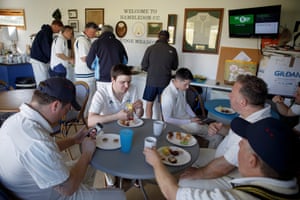
In that, and everything else, Hambledon seem pretty typical. They certainly have the same problems as everyone else. Their pavilion has been broken into four times in the past few months. The thieves cant have been cricketers, Le-Clercq says, or theyd have known theres nothing here in the winter. Theres not a whole lot here in the summer either. Sky Sports throws a lot of money at cricket, says Le-Clercq, but none of it reaches this far down.
Hambledon do have a very strong junior section. They have 150 kids, so many that they knocked back the ECB when the board tried to get them to sign up to their new All Stars coaching programme. It would have cost them 45 for every kid they enlisted, and Le-Clercq just couldnt see that it was worth it. He relies instead on the work of a committed group of volunteers who coach, umpire, keep the score, make the tea, and look after the facilities. Their wickets have been particularly good lately, the groundsman tells me, because he just got divorced so has a lot more time on his hands.
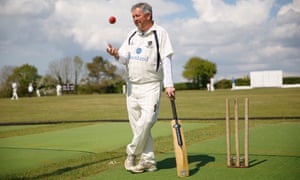
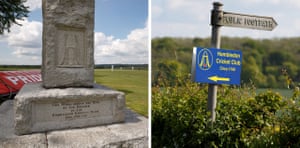

There are enough local people involved that the club still feels connected to community around it, among them crickets passed on from one generation to the next. Le-Clercqs dad was the clubs handyman, he is the chairman, and his son captains the first XI. People come here because their friends and parents do too, not because of what England do. We have lots of children that dont know who Jos Buttler is.
Its tea. The day is warm, the urn is hot, and the pies and rolls and cakes are all laid out by a stack of paper plates. Hambledon have 163. Alls well. But like everyone else who loves cricket, Le-Clercq is worried. He is worried that a lot of young people dont have the time for it any more, worried that it has died out in the local state schools, and worried that it is not being seen on free-to-air TV. The Hundred is supposed to help fix all this. But when I bring it up, one of Hambledons players looks at me like Ive just farted, and the others burst out laughing.
Dont mention it, says Le-Clercq. Its best not to get us started on that.

The lowdown at Lowerhouse
Mark Le-Clercq has never met Stan Heaton, but I reckon they would get on just fine. Heaton is an ex-policeman who runs Lowerhouse CC in Burnley. They are in the Lancashire League, a very different school of cricket to the sort they play down in Hambledon. Up here, every team has a pro. Once upon a time, and not so long ago, they were great players, too. Heaton made his first fifty against Kapil Dev, at his peak, in a match against Nelson. That same year Michael Holding was playing for Rishton, and Andy Roberts was at Haslingdon. Its different now. In 2009 Lowerhouse were trying to find an extra 20,000 to sign Ryan Harris. Three weeks later hed signed a 300,000 deal in the IPL.
Heaton started at Lowerhouse as a tallyboy (a child who helps keep score). Back then they were an abysmal club. I ask him when was the worst of it was. Oh, he says, deadpan, 1862 to 2004.
In 142 years of cricket, Lowerhouse finished runners-up once, and that was as good as it got. In the 90s we didnt even practise here because it was dangerous, Heaton says, it was all about survival then, we used to have meetings in the pub because they couldnt afford to put the heating on. They even put out a charity single to raise funds. It didnt. I realised that if I didnt do something, the club would die, Heaton says. So he did. And although he doesnt mention it, he did it so well, that he was made an MBE.
Now Heaton is Lowerhouses cricket chairman, junior coordinator, league rep, child welfare officer, and groundsman. Under him, they have become one of the most successful clubs in the county. They have won four league titles and three cups in 15 years. And they have done it with a team made up, in the main, of players who came through their own junior system.
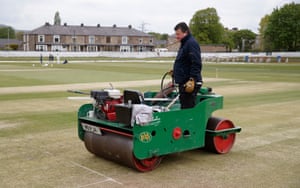
Come down here most week nights, one regular says, and there are 50, 60, 70 kids playing cricket. The setup at Lowerhouse gives the club a sense of purpose, a source of revenue, and a stream of players, volunteers and spectators. They get a lot of those, more than some county clubs. The big crowds come on Friday evenings when they play T20. They average around a thousand those nights, and they all pay a couple of quid on the gate.
Its turned into a bit of an event, says their chief executive, Matthew Stansfield. I was in a sandwich shop in the town centre and there was a couple of 17-year-old girls in front of me saying, Are you going to the cricket tonight? It was one of those moments where you think: Hang on, how has that come about?
One of the reasons for it is that they have such a savvy online presence. It is run by one of their younger members, Adam Hope. His granddad and dad both played here, but he wasnt a strong player so he figured this was his best way to contribute. He built them an app, and now he has started live streaming their games. The camera is attached to the top of the sightscreen which means that whenever the bowler switches around the wicket the TV footage gets yanked off centre. A viewer in Prague tweets him instructions on how to fix it. Left a bit, right a bit, perfect.
All this baffles Jack Foster, who is sitting on a bench by the scoreboard. Foster has been a member here for 77 years. He has two metal hips and a new heart valve and a left arm he cant use, but still comes to every home game. He grew up in one of the mill-workers houses that line two sides of the ground. There used to be two big weaving sheds there, Foster says, pointing away beyond fine leg, and a boilerhouse across the road, the printworks down the bottom, and a big factory over the back.
They are all gone now, so are the pubs, the Cricketers, the Redhouse, and the Junction, and a lot else too. From the outside it feels like the foundations this community was built on have all fallen away. The neighbouring parish, Rosegrave, has become one of the poorest in the country. But the club is still here, fighting for it. They are sponsored by the company which runs the local foodbank, and often hold bring-a-tin days. And much as it pains Heaton, they still throw a bonfire party every November. The grass at one end of the wicket is singed black. Its a 10-grand night for us, he says, so well carry on burning grass.

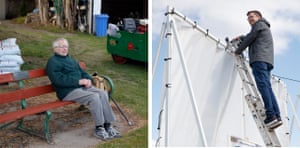
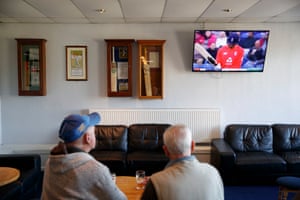

Lowerhouse works because Heaton and all the other volunteers do, too. Just like Hambledon, there are enough people here who care to keep the game going even while it is struggling elsewhere. Heaton says that state school cricket has gone, pub cricket has gone, and works cricket has gone. Very few places in the north have any of that any more. And again, this man, who has given so much of his life to the game, seems unconvinced by the ECB. He says its efforts to grow the game in state schools havent made a bit of difference around here. The reason Lowerhouse have so many kids playing, he says, is because they go into the schools themselves and recruit them directly.
Heaton knows how much Sky has done for the sport. Lowerhouse had one 50,000 grant for his nets, and another 50,000 grant for their changing room. Nobody can knock the money, he says, but we have to find some way of bringing this game back to the masses. He is not sure the World Cup will do it. I dont expect to see a surge in popularity, even if England win the thing, because how many people will see it? As for the Hundred: The ECB can try every experiment they can think of, he says, but 50-overs cricket is the pinnacle for us in this league, just like Test cricket is the pinnacle for international players.
Heaton only has half an eye on whats going on in the middle. He is more worried about organising his 14 youth teams for the next weeks fixtures. He likes to shut himself away in his car over the far side of the ground so he can concentrate on the job. He is eager to get back to it. I dont think were in a catastrophic position yet, he says, but I think were at a tipping point. The ECB have to make up their mind: do they want cricket to be an elite, professional sport, or do they want it to be the national game of summer? Right now thats in the balance.
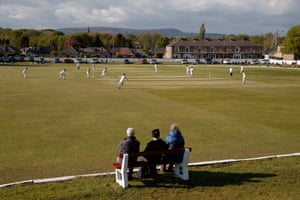
The elite club run on cake sales
Karen Rothery wants to talk about balance, too. Its the books she is worried about. Two weeks ago, she started work as the chief executive of Leicestershire County Cricket Club. Rothery spent two decades in the local garment trade but quit it because in the end I just felt like the industry had been stuck in terminal decline. Outside her office, Leicestershire are playing Warwickshire in the one-day cup. Its a bank holiday, but the ground is almost empty. There are exactly seven people in the big family stand.
I ask Rothery if she is worried she is going to end up spending more time managing decline. Theres always that risk, isnt there? she says, I hope not.
Leicestershire have what Rothery politely describes as a chequered history of financial viability. Right now, they depend on money they get from the ECB. Weve got to find different ways of making ourselves financially viable, she says. Were not going to survive if we dont do that. Weve got to try and engage with the community, make this a place people want to come. So this August, at the height of the season, they are turning the ground into an open-air cinema. They are screening Grease on one night and The Greatest Showman on the other.


Recent Comments